- Home
- Alexandre Dumas
Man in the Iron Mask (Barnes & Noble Classics Series) Page 3
Man in the Iron Mask (Barnes & Noble Classics Series) Read online
Page 3
Indeed, the women in this novel are, with few exceptions, most often presented in an unflattering light. Like Anne of Austria, the Duchesse de Chevreuse has abandoned a child—Raoul de Bragelonne—and seems to have set political intrigue and self-interest above more traditionally female pursuits and values. Both women’s bodies have been marked by signs of the physical (and moral) corruption that seemingly results from their desire for power.21 The Queen Mother suffers the acute pains of breast cancer, a disease whose symbolic significance is as undeniable as is its historical veracity (see chapter 4, where we learn that her pains first struck on the King’s birthday). The once-alluring Duchesse has become an unattractive crone. The Queen, Marie-Thérèse, wed to Louis only a year earlier, is largely neglected by her husband and ought to be deserving of our pity, but does not generally inspire great sympathy. She is overshadowed by Louis’s various mistresses, including her sister-in-law Henriette, a vivacious coquette who would eagerly rob the Queen of both the King’s affections and the primacy of her position at court. Dumas shows Louise de La Vallière to be a more amiable and more sincere person than any of these women. Orphaned, afflicted with a slight limp, and lacking both wealth and pretension, she is truly in love with the King and seeks no personal advancement or gain from their relationship. 22 Louise is, at first, subject to the scorn and ridicule of those at court who discover the secret of her liaison with Louis. Later, her fall from the King’s graces will be clearly signaled in the novel. Dumas makes it seem as though this trajectory is not only a necessary concession to history and the result of Louis’s constantly shifting affections, but also a form of punishment for Louise’s “infidelity” to Raoul.23
Women are not, however, the only characters in this novel who are depicted in an unfavorable manner. Dumas also shows contempt for male characters who fail to measure up to the example set by the Musketeers of the generation of Athos and d’Artagnan—men who lived by a code of loyalty, bravery, and honor (see chapter 11). Scenes and comments scattered throughout The Man in the Iron Mask make it clear that Dumas considers those valiant men of an earlier age the worthy descendants of the mythic heroes celebrated by Homer but views their successors as venial, self-interested, and/or cowardly courtiers. (He may well have been thinking about the politicians and government functionaries of his own day in so doing.)
The superiority of those who served the crown in the days of Louis XIII and Richelieu is clear even in the case of Porthos, whose character here, as it was in The Three Musketeers, is composed of equal parts of courage and principle on the one hand and vanity and ambition on the other. Dumas loves this giant of a man, who out of friendship for the Abbé d’Herblay (Aramis) is misled into believing that he is doing a noble deed and instead finds that he has conspired to replace Louis with Philippe. He is a loyal and valiant sacrificial victim, and Dumas gives him a titan’s burial when the grotto in which he and Aramis have taken temporary refuge on Belle-Isle falls down on him while Aramis makes good his escape from the King’s forces (see chapters 76-79). In fact, Dumas told his son that he was so upset after composing the pages where he describes the death of Porthos that he could not resume writing for days. Yet Dumas continues to poke gentle fun at Porthos in this novel as he did in The Three Musketeers. He once again highlights Porthos’s unflagging appetite for food and love of clothes and makes much of his preoccupation with titles—now called M. le Baron du Vallon de Pierrefonds, he hopes to be named a duke.
Indeed, whereas in The Three Musketeers Porthos at times lacked a single, presentable suit of clothes, he now has acquired a vast wardrobe whose sole purpose is to guarantee that he will always be in fashion and will be prepared for any occasion. It is amusingly ironic, then, that when he is invited to Vaux, Porthos complains he has nothing to wear. He explains this paradoxical situation to d‘Artagnan by disclosing a longstanding objection to be measured by a tailor. Rather than subject himself to being touched by a social inferior—something he considers demeaning for an aristocratic gentleman like himself—Porthos has, over the years, sent his valet, Mouston (called Mousqueton in The Three Musketeers), to be fitted in his place. At first, this meant encouraging Mouston to eat more food so that he would match his master’s girth. Now, however, the valet has grown more rotund than his master, and the already-made suits are too large for Porthos to wear. In an effort to resolve the problem and assuage Porthos’s ego, d’Artagnan takes his friend to see the King’s own tailor, a man who will prove to be too busy to address Porthos’s sartorial needs. As it happens, though, the comic playwright Molière is also present at the tailor‘s, and he agrees, with a wink to d’Artagnan, to attend to the problem. Dumas makes it clear from the description of the subsequent scene that we are to consider this event the (clearly apocryphal) inspiration for what would become Moliere’s 1670 comedy Le Bourgeois gentilhomme (The Would-Be Gentleman) .
The occasion also has a darker side, however, for it is during his visit to the tailor that d‘Artagnan unexpectedly encounters Aramis, who—rather surprisingly in d’Artagnan’s opinion—has been chosen by Fouquet to oversee the final details concerning the reception of the King at Vaux. Aramis has come in search of information about the clothes Louis will be wearing during the festivities there; he has brought with him the celebrated painter Charles Le Brun, who, Aramis claims, needs a sample of the cloth from which the King’s clothes are to be made so that the portrait of Louis commissioned by Fouquet will be an exact copy of the royal guest’s appearance at the time of his stay at Vaux. D‘Artagnan is immediately suspicious of this explanation, but to his great frustration, he cannot yet imagine the real purpose behind Aramis’s strange request. The two men spar verbally with each other, each hoping to outwit the other and penetrate his opponent’s secrets. It will be only much later—too late—that d’Artagnan will finally understand the hidden purpose behind this outwardly flattering and seemingly benign reproduction/reflection—this doubling—of Louis’s person. The captain of the Musketeers will show greater perspicacity when he later sees Philippe in Louis’s clothes in Louis’s bedroom at Vaux and recognizes that the man is not his king.
Indeed, much of this novel is concerned with secrets, deceptions, evasions, negotiations, and misrepresentations. Such things are, of course, the building blocks of narrative incident and are manna to authors of serial literature who seek to prolong the development of their stories. Aramis, the most enigmatic and sinister of the former Musketeers who reappear in The Man in The Iron Mask, is at the heart of many of the double-dealings in this book. He knows that knowledge, like royalty, is power, and power is what he seeks. Many of the secrets he and others reveal or conceal to suit their purposes are of a compromising or dangerous nature. They concern such things as the birth of the twin princes (a state secret) and the existence of hidden doors and passageways that allow lovers to meet or crimes to take place. Aramis has, for example, built a secret opening into the floor of his room at Vaux. Masked by the design of the ceiling fresco in the King’s bedchamber below, this hidden aperture allows him and Philippe to observe the royal bedtime ceremonials (le coucher du roi) and the members of Louis’s family and inner circle of courtiers without being seen (chapters 41, 42, 45, and 48). As a result, Philippe will be perfectly prepared to replace his brother in the morning after another secret passage allows for the substitution of one twin by the other and the removal of the King to the Bastille in a closed carriage.24
Earlier, Aramis made several clandestine visits to the Bastille. On one such occasion (chapter 24)—he was preparing to liberate Philippe with the uncomprehending assistance of Baisemeaux, the governor of the prison—he met Athos and d‘Artagnan there. They do not want Aramis to know that Louis has just ordered d’Artagnan to arrest Athos, nor does he want them to guess his business there. This is just one of several events that underscore the fact that Aramis’s interests are no longer closely aligned with those of his old friends and that new tensions and suspicions have crept into their once close-knit relationship. D‘
Artagnan will, however, eventually discover what Aramis was doing at the Bastille. Although disapproving both of the plot and of the cruel misuse of Porthos’s naivete, because of their past friendship, the Musketeer will later try to provide Aramis and Porthos with an opportunity to evade arrest by the King’s forces that he has been obliged to lead to Belle-Isle. That effort will fail. He will, therefore, be more than a little surprised when, toward the end of the novel, he finds Aramis, now the duc d’Alameda and the Spanish ambassador to France, received with great ceremony and honor at Louis’s palace. The reader, too, may find this latest (re) incarnation of Aramis surprising and wonder why, of all the Musketeers, he alone survives at the end of the novel.25 Aramis’s continued existence is, perhaps, a sign of the power he has acquired through his knowledge of the secrets of others and his role as general of the Jesuits. It may also be the clearest signal Dumas could contrive to mark the end of an age and a system of values—of that code of honor, loyalty, service, and courage espoused here by Athos, Porthos, d‘Artagnan (and Bragelonne). The battlefield death of d’Artagnan, which occurs at the precise moment he receives his long-postponed promotion to the rank of maréchal de France, might then be seen as the mirror opposite of Aramis’s resurrection—a passing of the bâton that marks the true start of Louis’s personal reign.26
Though not as joyful or as action-packed as The Three Musketeers, The Man in the Iron Mask is just as full of intrigue and high emotion as that earlier work was. Now, however, the tone is darker not only because our heroes have aged, but also because the personal and political circumstances surrounding their lives have grown more complex. D‘Artagnan’s furious pursuit of Fouquet across the countryside near Nantes—the Surintendant is hoping to avoid arrest—is so intense that the men’s superb horses die of exhaustion and they themselves can barely stand. Indeed, d’Artagnan is ultimately reduced to racing after his man on foot, stripping off his own clothes along the way. When d‘Artagnan faints after making his arrest, Fouquet, in a clear display of honor and generosity, refuses to run away. The two men express a deep respect for one another and together walk back to the spot where d’Artagnan had left the barred carriage that will transport Fouquet to prison (chapter 68) . This is not an example of the impetuous adventure or easy courage of reckless youth; it is a moving demonstration of mature heroism, integrity, and an almost fatalistic acquiescence to duty and authority. It is not entirely surprising that such elements of the novel are often sacrificed in modern cinematic refashionings of The Man in the Iron Mask.
A complex tapestry of fact and fiction and of the personal and the political, The Man in the Iron Mask serves as a moving and psychologically nuanced conclusion to the Musketeer trilogy. It does not matter to readers of this book that Dumas at times rearranges, invents, or falsifies historical fact. He makes us believe in his characters and the events that mark their lives. By some mysterious process of artistic alchemy and creativity, Dumas’s imagined history is transformed into History. We accept it as truth even when we know better. The agonies of love and death, the obligations of duty and honor, the trials and the triumphs of human existence all find a place in these pages and seem familiar to us despite the potentially distancing effects of the book’s seventeenth-century French setting and the slightly old-fashioned language of this translation. It is no wonder that it is Dumas’s version of the legend of the man in the iron mask that has survived and will continue to survive longer than any other.
Barbara T. Cooper is Professor of French at the University of New Hampshire. She is a member of the editorial boards of Nineteenth-Century French Studies and Les Cahiers Alexandre Dumas. She specializes in nineteenth-century French drama and in works by Dumas. Cooper was the editor of a volume on French dramatists from 1789 to 1914 that is part of the Dictionary of Literary Biography series and wrote the essay on Dumas in that volume. She has also coedited two volumes of essays on nineteenth-century French literature and culture, and is the author of more than fifty scholarly articles on works of nineteenth-century French literature, many of which focus on texts by Dumas. In 2002 she participated in several colloquia marking the bicentennial of Dumas’s birth. Cooper, who holds her Ph.D. from the University of Wisconsin-Madison, was named a Chevalier dans l’Ordre des Palmes Académiques by the French government in 1994 for her contributions to the promotion and propagation of French culture. She wrote the Introduction and Notes for the Barnes & Noble Classics edition of Dumas’s The Three Musketeers.
This essay is dedicated to Wallace—encore et toujours—and to Ken, Joe, and Mark.
NOTES
1 The initial chapter here is chapter 179 (of 266, plus an unnumbered epilogue and a chapter on the death of d‘Artagnan) in Bragelonne. See the article by Bassan on the dramatization of the Musketeer cycle in the “For Further Reading” section. Also see Jean-Christian Petitfils’s book Le Masque de fer: Entre histoire et légende for the most recent historical study of the real man in the iron mask. Although Dumas was no doubt familiar with most of the texts cited in this paragraph, his novel was based on seventeenth- and eighteenth-century sources, including, among others, the memoirs of Madame de Lafayette and Madame de Motteville, and those of the Cardinal de Retz and the Duc de Richelieu. He also relied on histories of the Age of Louis XIV written by Anquetil, Tallement des Réaux, and Michaud, among others, dating from the eighteenth and nineteenth centuries.
2 Claude Schopp has collected Dumas’s political writings from this period in the volume “1848: Alexandre Dumas dans la Révolution,” Les Cahiers Alexandre Dumas 25 ( 1998) .
3 It is not merely by chance that Dumas assigned the name Philippe to Louis XIV’s fictional twin. That was in fact the name of Louis XIV’s real-life younger brother (not a twin), Philippe, duc d’Orléans. But it is also interesting to note that the names Louis and Philippe together form Louis-Philippe and that Louis-Philippe d‘Orléans was king of the French at the time Dumas began his novel. He would be deposed by the Revolution of 1848. See my article on the role of names in The Count of Monte Cristo, cited in the “For Further Reading” section.
4 See Youjun Peng, La Nation chez Alexandre Dumas, for a more detailed discussion of the place of these subjects in Dumas’s novels generally. Also see Jeanne Bern, “d’Artagnan et après. Lecture symbolique et historique de la ‘trilogie’ de Dumas,” Littérature 22 (May 1976), pp. 13-29, and Jean Thibeaudeau, “Les Trois mousquetaires suivi de Vingt ans après et du Vicomte de Bragelonne, ou dix ans plus tard, ou une disparition de la fiction dans le texte historique,” Europe 48:490-491 (February-March 1970), pp. 59-75. One could argue that Milady’s misadventure also had underlying political significance.
5 In 1966 Roberto Rossellini directed a film entitled La Prise de pouvoir par Louis XIV ( The Rise to Power of Louis XIV) that recounts parts of this challenging period in the young King’s life. Twenty Years After and Bragelonne also deal with issues of political power and legitimacy in England in some chapters.
6 Prior to his appointment as surintendant, Fouquet had already purchased the title of procureur général, a parliamentary position that gave him immunity from legal prosecution. As we shall see, Fouquet is at one point convinced to sell that post in order to raise much-needed cash and is thereafter vulnerable to arrest. Sentenced to banishment and the forfeit of his possessions, Fouquet has his punishment commuted by the King to lifetime imprisonment. He will die in the prison of Pignerol.
7 Michael Brix has written a wonderfully illustrated volume about Vaux entitled The Baroque Landscape: Andre Le Nôtre & Vaux-le-Vicomte. Roland ]offé’s 2000 film Vatel depicts Fouquet’s reception of the King at Vaux and was photographed, in part, on location. There is also an Internet site that can be consulted for information on the castle and its gardens; see the “For Further Reading” section at the end of this volume. The castle is presently owned by Count Patrice de Vogue who, together with his family, has devoted himself to restoring it to its former splendor. He owns a letter signed by the real-life d’Artagnan, Char
les de Baatz d‘Artagnan (1623-1673), referring to Fouquet’s arrest and imprisonment.
8 The unwritten laws of hospitality at the time made the person of a guest—royal or not—sacred. It was the host’s duty to preserve and protect a guest from any harm while under his roof. Louis is, moreover, deeply humiliated by the fact that Fouquet has seen the sorry physical and mental state into which he descended during the brief period of his incarceration in the Bastille. This gives him even more reason to hate the Surintendant.
9 The Belle-Isle to Nantes axis is the site of another important confrontation between Louis and Fouquet (chapters 63-68) and can be seen as something of a “bookend” episode to the events at Vaux and Paris with which this text begins.
10 See Marie-Christine Natta’s Le Temps des mousquetaires. Natta argues that it is because Dumas allows his characters to age over the course of the novels in his trilogy that they continue to appeal to readers today.
11 Raoul will, however later recall that his father lovingly watched over him during his nighttime slumbers. Bragelonne’s mother is the Duchesse de Chevreuse, former lady-in-waiting to Queen Anne of Austria and former lover of Aramis. When banished from court by Louis XIII in The Three Musketeers, she used the name Marie Michon in her communications with Aramis. In Twenty Years After, she sleeps with Athos, whom she mistakenly takes for a priest, and Raoul is the product of their one-night affair. After the Duchesse has abandoned the child to a priest’s care, Athos finds and raises the boy on his own. All four of the Musketeers at some point display paternal affection for the young man.

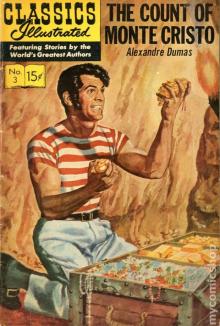 The Count of Monte Cristo, Illustrated
The Count of Monte Cristo, Illustrated Knight of Maison-Rouge
Knight of Maison-Rouge![The Three Musketeers - Alexandre Dumas - [Full Version] - (ANNOTATED) Read online](http://i1.bookreadfree.com/14/the_three_musketeers_-_alexandre_dumas_-_[full_version]_-_annotated_preview.jpg) The Three Musketeers - Alexandre Dumas - [Full Version] - (ANNOTATED)
The Three Musketeers - Alexandre Dumas - [Full Version] - (ANNOTATED)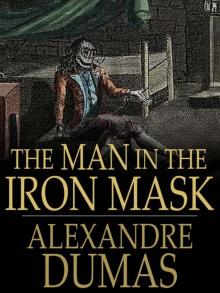 The Man in the Iron Mask
The Man in the Iron Mask The Count of Monte Cristo (Penguin Classics eBook)
The Count of Monte Cristo (Penguin Classics eBook)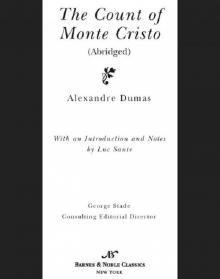 Count of Monte Cristo (abridged) (Barnes & Noble Classics Series)
Count of Monte Cristo (abridged) (Barnes & Noble Classics Series) The Women's War
The Women's War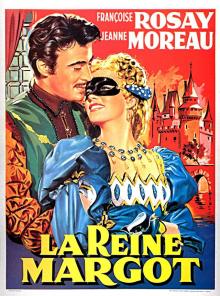 La reine Margot. English
La reine Margot. English The Vicomte de Bragelonne
The Vicomte de Bragelonne__english_preview.jpg) La dame aux camélias (Novel). English
La dame aux camélias (Novel). English The Count of Monte Cristo
The Count of Monte Cristo Balsamo, the Magician; or, The Memoirs of a Physician
Balsamo, the Magician; or, The Memoirs of a Physician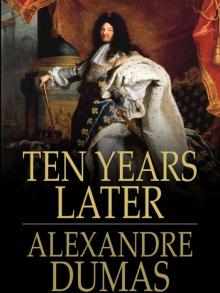 Ten Years Later
Ten Years Later The Romance of Violette
The Romance of Violette The Mesmerist's Victim
The Mesmerist's Victim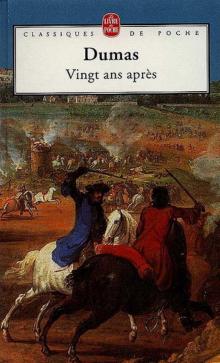 Vingt ans après. English
Vingt ans après. English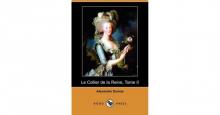 Le collier de la reine. English
Le collier de la reine. English Taking the Bastile; Or, Pitou the Peasant
Taking the Bastile; Or, Pitou the Peasant The Hero of the People: A Historical Romance of Love, Liberty and Loyalty
The Hero of the People: A Historical Romance of Love, Liberty and Loyalty Louise de la Valliere
Louise de la Valliere Les Quarante-cinq. English
Les Quarante-cinq. English Ange Pitou (Volume 1)
Ange Pitou (Volume 1) The Royal Life Guard; or, the flight of the royal family.
The Royal Life Guard; or, the flight of the royal family. Les trois mousquetaires. English
Les trois mousquetaires. English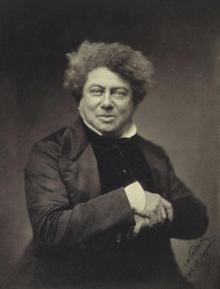 Une fille du régent. English
Une fille du régent. English The Knight of Maison-Rouge
The Knight of Maison-Rouge The Count of Monte Cristo (Unabridged Penguin)
The Count of Monte Cristo (Unabridged Penguin) Ange Pitou
Ange Pitou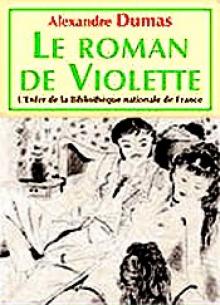 The Romance of Violette (vintage erotica)
The Romance of Violette (vintage erotica)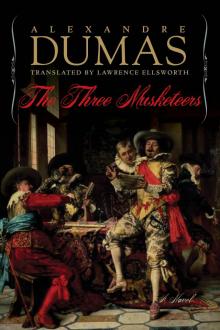 The Three Musketeers
The Three Musketeers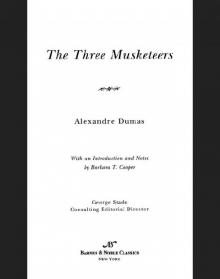 Three Musketeers (Barnes & Noble Classics Series)
Three Musketeers (Barnes & Noble Classics Series) Georges
Georges Man in the Iron Mask (Barnes & Noble Classics Series)
Man in the Iron Mask (Barnes & Noble Classics Series)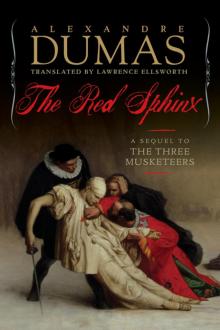 The Red Sphinx
The Red Sphinx